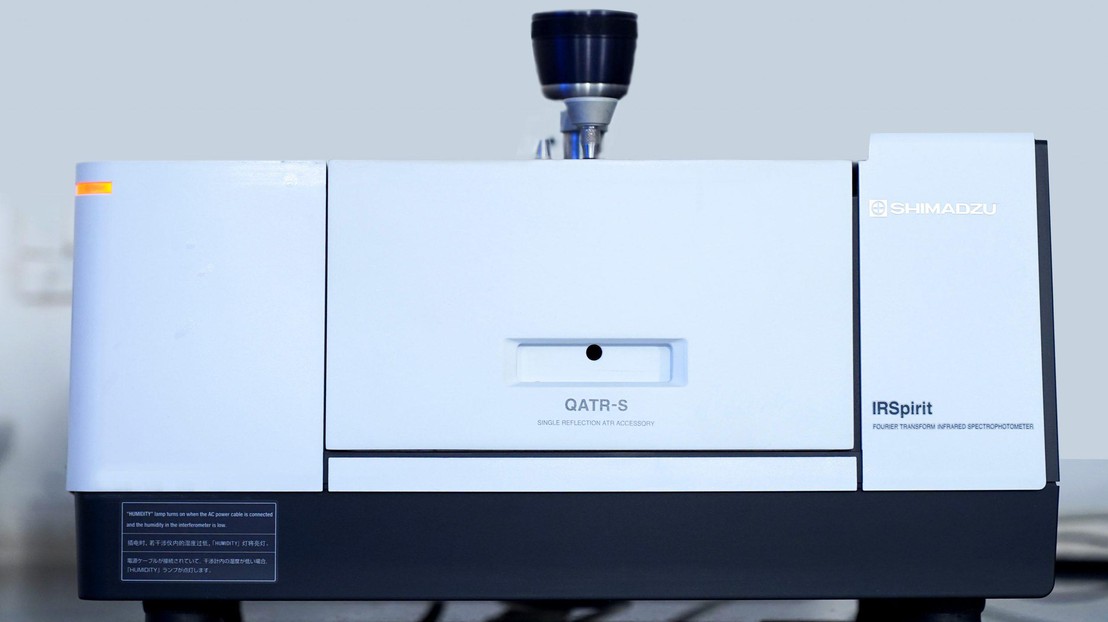A new app makes molecules vibrate

An infrared spectrophotometer in a lab. Credit: Pixahive (user biNxWiz)
A new Web app developed by EPFL scientists bridges educational gaps in the teaching of infrared spectroscopy, a key technique in chemistry. Now in beta, the app has already been proven a resounding success with students and teachers, especially in countries with limited access to infrared spectrometers.
Molecules are constantly moving. The bonds between atoms vibrate, and their strength determines how much energy is needed for those vibrations. The atoms in a molecule interact with each other, making every bond vibrate with a slightly different frequency, which chemists can measure with infrared (IR) spectroscopy. Because these vibrations are a molecule’s “fingerprint”, IR spectroscopy has become a key technique in analytical chemistry; for example, it’s used to identify chemicals in outer space.
Due to its prominent role, IR spectroscopy has become a key element in undergraduate teaching. Students typically learn about it in two different classes: In quantum chemistry, they derive the equations to describe the expected vibration spectrum of certain bonds. But these calculations are typically only feasible for small molecules of two or three atoms – at least manually. In the organic chemistry (lab) class, undergraduates learn how to use lookup tables to match the IR fingerprint to the IR spectra in reference books.
At present, the quantum mechanical and organic chemistry perspectives are disconnected: For example, if a student is interested in understanding how changes in a particular molecule cause changes in the IR-spectrum, the quantum mechanics way is too complex, while the lookup tables most likely do not have that exact change tabulated.
It is therefore impossible for students to develop a deep, intuitive understanding of how the molecule’s structure is connected to the vibration spectrum. But a new Web application that combines computational techniques with Web technologies, provides students with a virtual lab that helps explore that link.
The Web app, ir.cheminfo.org, is published in The Journal of Chemical Education. It is a collaboration between Kevin Jablonka of EPFL’s Laboratory of Molecular Simulation, led by Professor Berend Smit, and Luc Patiny of the School’s cheminformatics group.
The app allows students to draw almost any organic molecule, and then it performs a quantum-chemical calculation on a Web service. It then interactively displays the result, linking animations of the vibrations directly to the peaks in the spectrum, letting students see which part of the molecule is causing which part of the IR-fingerprint. They can even change a functional group on the molecule and see how that affects the IR spectrum.
"The most surprising feedback on the beta version of Web app came from universities in developing countries with limited access to IR spectrometers,” says Berend Smit. “They told us that the app allowed them to still teach an IR spectroscopy course, which illustrates the importance of our approach. That one only needs a simple Web browser to access the app is its important technological innovation, at least in terms of design.”
Motivated by the idea that the virtual lab can make a difference in places that need it the most, the team is currently working on extending this approach to other spectroscopy techniques.
The IR-spectrum app can be found here: https://go.epfl.ch/learnir and the documentation on how to use it here: https://go.epfl.ch/ir-prediction-docs
Kevin Maik Jablonka, Luc Patiny, and Berend Smit, Making Molecules Vibrate: Interactive Web Environment for the Teaching of Infrared Spectroscopy J. Chem. Educ. https://doi.org/10.1021/acs.jchemed.1c01101